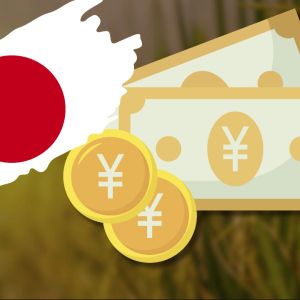Japan’s rice crisis deepens as market giants scoop best grain
3 min read
Japan’s rice supply debacle continues as the government is now seeking to lower the price of its stockpiled grain, and focus on discretionary contracts for smaller buyers. However, recent comments from agriculture minister Shinjiro Koizumi have drawn criticism regarding prices, preferential selling, and direct state intervention in the market. With state-imposed production limits for farmers, a devastated yen and rampant inflation, Japan’s rice market is still in the throes of what local media is calling the “ Reiwa Rice Strife .” On Monday, the Ministry of Agriculture, Forestry and Fisheries ended the previous bidding system for selling stockpiled state rice, and introduced “discretionary contracts.”Stockpiled rice has been released by the state in recent times in order to combat shortage and skyrocketing prices, with the price of the staple grain doubling in only a year for consumers. Koizumi to release older rice to small businesses, rural areas Agriculture Minister Shinjiro Koizumi said at a House of Representatives committee meeting Wednesday: “We want to continue making efforts to distribute stockpiled rice as widely as possible in the region,” intending to focus on smaller businesses after ending sales to large buyers on Tuesday. Terraced rice fields in Japan. Photo: DeltaWorks . Of the 300,000 tons up for sale via the new discretionary contracts scheme, much of the newer grain (from 2022) was quickly gobbled up instantly by giant corporations such as AEON and Pan Pacific International Holdings (PPIH).One local supermarket manager, Tatsuhito Tanaka, was quoted by regional media about the scheme, saying: “I really hope they’ll share the rice with us so that it’s not just the big companies.”As per regional reports , the remaining 100,000 tons of older (2021) stockpiled rice is set to be contracted out to smaller enterprises over the next few months. The focus will onstensibly be on supporting rural areas. Farmers say the government is the real reason for the shortage As Cryptopolitan reported previously, there is much debate over why a shortage of Japan’s prize grain even occurred in the first place. Mass media has been blaming the weather and myriad other factors, but full-time Japanese farmers are directly blaming the government and special interests for subsidizing limits on acreage, engaging in backroom deals, and essentially rigging prices and contracts. As nippon.com reported last year :“Currently, 40% of paddy fields are not in use, meaning that production is limited to around 6.5 million tons. If Japan stopped this policy of reduced production, and instead exported 4 million tons, it could handle the kind of situation seen this year through a small decrease in the amount exported and no domestic shortages.” JPY to USD historical data. Source: Trading Economics . Koizumi’s stance has drawn fire from the Constitutional Democratic Party of Japan, with party member Kaori Ishikawa noting Wednesday that it is not the state’s place to be involved in rice prices. Koizumi responded that this was only an “emergency measure.” State intervention thus far has not lowered the still-rising prices .From the stance of many, corporate giants are getting preferential treatment, with local supermarkets left to crunch on the remaining, oldest grain almost as an afterthought. Much like the small-scale farmers unable to produce due to Japan Agriculture Cooperatives’ powerful connections to Tokyo subsidies and restrictions.At the time of writing, the USD is flexing against JPY again, with an exchange rate of 145.81 JPY/1 USD. KEY Difference Wire helps crypto brands break through and dominate headlines fast

Source: Cryptopolitan



